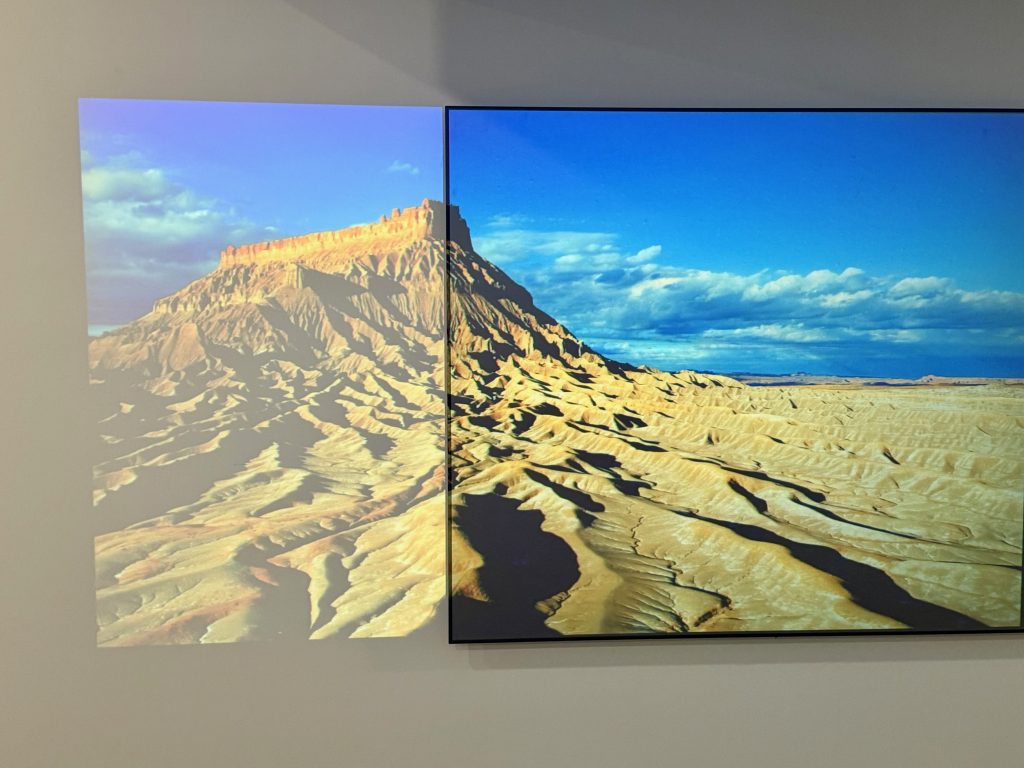Why using a dedicated screen matters—and when you can make exceptions

If you’re building a home theater, it’s tempting to ask: “Can’t I just project onto a wall?” Or, “Will a white paint finish work just as well as a screen?” We get it—screens feel like one more thing on the list. But here’s the truth: the projector screen isn’t just an accessory—it’s a performance piece.
Think of the Screen Like a Speaker
Imagine investing in a high-end audio system, only to run it through a $50 speaker. It might work—but it won’t “wow” anyone. The same logic applies here. A quality projector screen is engineered to handle contrast, brightness, and ambient light in ways a wall simply can’t.
The right screen enhances everything—from the sharpness of the image to the richness of the colors. Especially in rooms that aren’t completely dark, screen material and design make all the difference.
What If My Room Has Windows or Ambient Light?
You don’t need a pitch-black basement to enjoy a great projector setup. Today’s screens, especially ambient light-rejecting (ALR) models like the Slate screen from Screen Innovations are built to maintain image quality in brighter rooms. These screens use optical coatings that reflect the light from the projector and absorb or deflect most of the rest. That means your picture stays bold and clear—even with sunlight coming in.
Acoustically Transparent Screens: Theater-Like Sound and Sightlines
One of the best-kept secrets in home theater design is the acoustically transparent screen. These screens allow sound to pass through, so one or all of your front speakers—left, center, and right—can be mounted directly behind the screen, just like they are in a commercial theater. This creates a more immersive experience, with sound coming from the action on screen, not beside it. It also gives your room a cleaner, more minimalist aesthetic by keeping speakers out of sight.
Do I Have to Use a Screen?
Technically? No. Projectors will display an image on any flat surface. But if you’re investing in a home theater—something meant to replicate the magic of the cinema at home—it doesn’t make sense to compromise on the one thing you’ll be looking at the entire time.
Still Not Sure?
We’ve worked in homes of all shapes and sizes, from full basement theaters to multi-purpose media rooms. Our design consultants help you choose the right gear for the right space—balancing screen size, projector placement, and environmental factors like lighting and seating.
Sometimes a screen is optional. But often, it’s what elevates a setup from just watchable to wow-worthy.
Bottom Line
If you’re building a space for entertainment, the projector screen is worth the attention. It’s not just about having a big image—it’s about having a great one, night after night, movie after movie.
Need help deciding what kind of screen is right for your space? Let’s talk.
